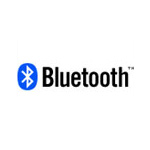Bluetooth To Include Ultra Wide Band In Future Specs
5 May 2005 by axxxr The Bluetooth Special Interest Group (SIG) announced its intent to work with the developers of the wireless technology commonly known as Ultra-wideband (UWB) to combine strengths of both technologies.
This decision will allow Bluetooth technology to extend its long-term roadmap to meet the high-speed demands of synchronizing and transferring large amounts of data as well as enabling high quality video applications for portable devices. UWB will benefit from Bluetooth technology’s manifested maturity, qualification program, brand equity and comprehensive application layer. A Responsible Undertaking “It has been apparent that members of the Bluetooth SIG would like to enable products with higher data rates. I feel that it is the responsibility of the industry to recognize synergies and limit fragmentation as much as possible,"said Michael Foley, Ph. D., executive director of the Bluetooth SIG. “Joint development between Bluetooth technology and UWB is the fastest and most economical pathway for both technologies to meet the future demands of companies and end users. At the same time it is important to understand that Bluetooth is a global standard to a great extent driven by the adoption into mobile consumer devices like mobile phones, so not only is a requirement that world-wide regulation is achieved but also that it is done in a way so co-existence with future mobile standards is realized." “The Bluetooth SIG's intention to employ UWB in their next generation products is a very positive step in allowing consumers to connect seamlessly between PCs, phones and consumer electronics equipment. This is an extremely positive move" said Stephen Wood, UWB technology strategist, Intel. "Aligning the evolution of Bluetooth technology with UWB supports seamless mobility by enabling consumers to acquire and share media within the home, the auto, at work and on the go," said Miguel Pellon, vice president technology-standards, Motorola, Inc. “The Bluetooth SIG has set a clear direction for addressing future consumer needs." Advantages for Bluetooth wireless technology “The collaboration of both groups is a natural and necessary evolution of the market," said Celeste Crystal, senior research analyst, semiconductors, at IDC. “As consumers continue to increase the use of portable and digital media devices, the need for standardized, higher performance, low power connectivity solutions becomes integral. Leveraging Bluetooth technology’s established brand and traction in the consumer space with the higher data rate, lower power UWB technology should enable a faster time to market for next generation devices, and compliment the growing demand for connectivity." Advantages and issues for UWB Before bringing products to the global market some fundamental issues of UWB need to be resolved like interference issues for Wireless LAN, WiMax and new Cellular bands, in addition to the lack of a worldwide spectrum allocation for UWB. |










 RSS feed
RSS feed